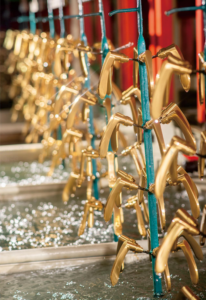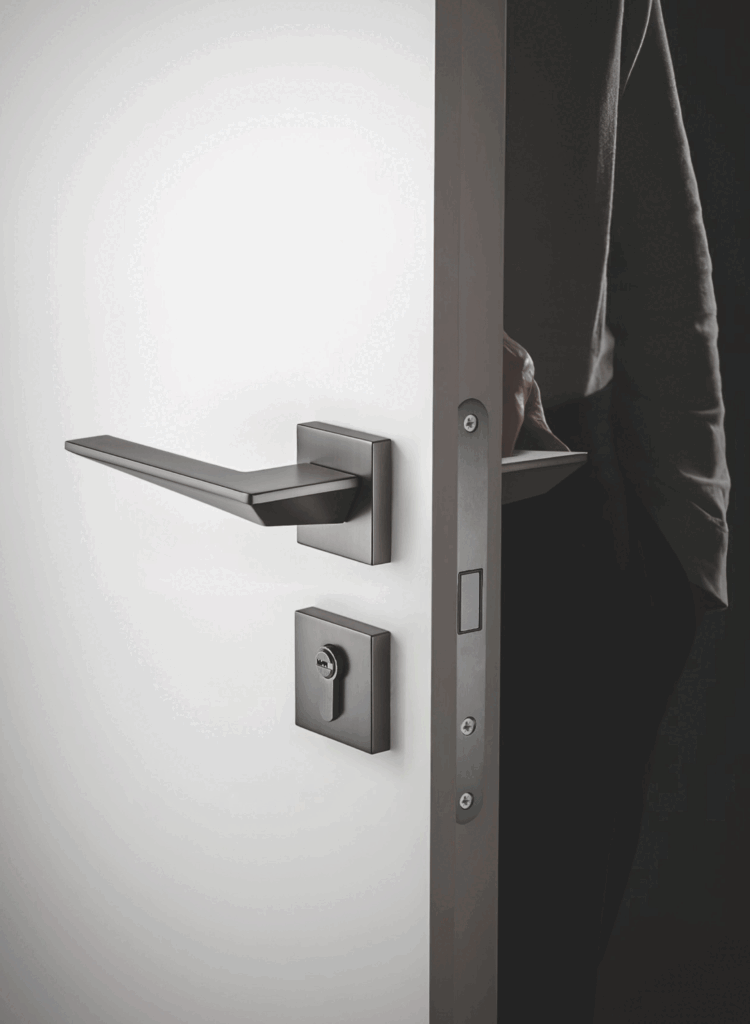In the door hardware industry, aesthetics play a crucial role alongside functionality. The finish and color of door hardware can significantly impact the overall look of a space while also providing essential protection against wear and corrosion. With over 20 years of experience in the door hardware market, I’ve seen firsthand how effective surface treatments can enhance the quality and appeal of products such as mechanical door locks, handles, hinges, and door closers. In this article, we’ll explore various finishing processes, including electroplating, painting, and electrophoretic coating.
The Importance of Surface Finishing
Surface finishing is not just about aesthetics; it also provides protective qualities. Properly finished door hardware can withstand environmental factors, resist corrosion, and maintain its appearance over time. Here are some popular finishing techniques used in the industry:
1. Electroplating

Overview: Electroplating is a widely used method that involves depositing a layer of metal onto a substrate using an electric current. This process enhances the appearance and corrosion resistance of door hardware.
Process:
- Preparation: The metal surface is thoroughly cleaned to remove any contaminants.
- Electrolytic Solution: The hardware is submerged in a solution containing metal ions (e.g., nickel, chrome).
- Electrolysis: An electric current is applied, causing the metal ions to bond with the surface of the hardware.
Benefits:
- Provides a durable and attractive finish.
- Enhances resistance to scratches and tarnishing.
- Allows for a variety of metallic finishes, such as chrome and nickel.
Electroplating is particularly popular for door handles and locks, adding a sleek, shiny look while ensuring long-lasting performance.
2. Spray Painting

Overview: Spray painting is a straightforward method that involves applying paint using a spray gun. This technique is often used for a wide range of finishes and colors.
Process:
- Surface Preparation: Just like electroplating, the surface must be cleaned and prepped.
- Application: Paint is sprayed onto the surface, creating a uniform coating.
- Curing: The painted hardware is often cured in an oven to enhance adhesion and durability.
Benefits:
- Offers a vast array of colors and finishes, including matte and gloss.
- Cost-effective and suitable for bulk production.
- Allows for customization, making it ideal for unique design requirements.
Spray painting is commonly used for door hardware in residential and commercial settings, allowing for personalized aesthetics.
3. Electrophoretic Coating (E-Coating)

Overview: Electrophoretic coating, or E-coating, is an advanced technique that involves the use of electrical current to deposit a coating onto metal surfaces.
Process:
- Preparation: The metal surface is cleaned and treated to ensure proper adhesion.
- Suspension in Bath: The hardware is submerged in a water-based paint solution.
- Electric Current: An electric current is passed through the bath, causing paint particles to migrate and adhere to the surface.
- Curing: After coating, the hardware is cured in an oven to enhance durability.
Benefits:
- Provides an even and consistent coating, even in hard-to-reach areas.
- Highly resistant to corrosion and wear, making it suitable for outdoor applications.
- Environmentally friendly, as it uses water-based solutions.
E-coating is especially beneficial for hardware exposed to harsh environments, ensuring longevity and performance.
4. Powder Coating

Overview: Powder coating is a dry finishing process that uses finely ground particles of pigment and resin. The powder is applied electrostatically and cured under heat.
Process:
- Preparation: Similar to other methods, the surface must be clean and free from contaminants.
- Application: The powder is sprayed onto the surface using an electrostatic spray gun.
- Curing: The coated hardware is heated in an oven, causing the powder to melt and form a durable layer.
Benefits:
- Offers a tough, impact-resistant finish.
- Available in a wide range of colors and textures.
- Environmentally friendly, with minimal VOC emissions.
Powder coating is popular for both indoor and outdoor hardware, providing excellent protection and aesthetic appeal.
Conclusion
Choosing the right surface treatment for door hardware is essential for enhancing both its appearance and durability. Whether you opt for electroplating, spray painting, electrophoretic coating, or powder coating, each method offers unique benefits that can elevate the quality of your products.
At umaylock, we understand the importance of high-quality finishes in door hardware. Our products, including mechanical door locks, handles, hinges, and door closers, are available with various surface treatments tailored to meet diverse customer needs. Investing in properly finished hardware not only ensures longevity but also enhances the overall aesthetic of your spaces.
By focusing on quality and innovation in our finishing processes, we help you unlock the full potential of your projects. If you’re interested in learning more about our products and finishes, feel free to reach out!
Share This Story, Choose Your Platform!

